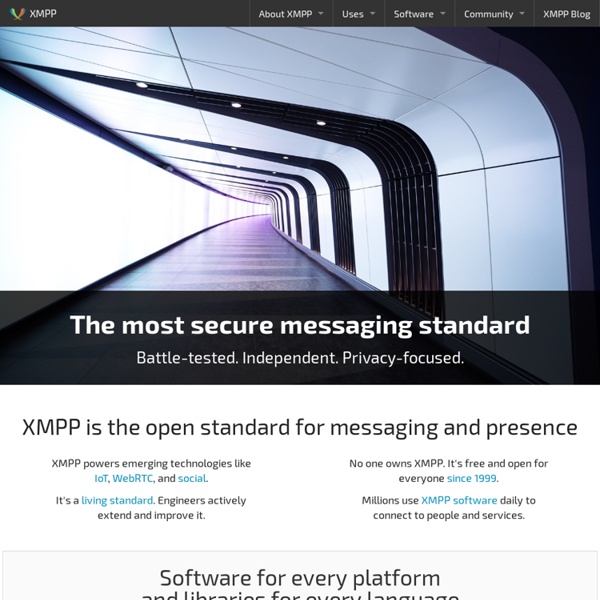



NGINX HTTP Push Module jQuery: The Write Less, Do More, JavaScript Library Open Access publiceren levert Nederland miljoenen op Australisch onderzoeker becijfert voordelen. Als alle wetenschappelijke artikelen openbaar beschikbaar zouden zijn, zou dat de Nederlandse samenleving een voordeel op kunnen leveren van 133 miljoen euro per jaar. Dit heeft de Australische econoom Professor John Houghton becijferd in een studie die 10 juni jl. door SURFfoundation is aangeboden aan het ministerie van Onderwijs, Cultuur en Wetenschappen. Op dit moment betalen universiteiten en hogescholen miljoenen euro's per jaar voor toegang tot wetenschappelijke publicaties. In de studie ‘Costs and Benefits of Research Communication: The Dutch Situation’ zijn drie publicatiemodellen vergeleken. Dit kan leiden tot een jaarlijks voordeel van 133 miljoen euro. Het rapport concludeert dat niet alleen op lange termijn belangrijke voordelen zijn te behalen. Wim Liebrand, directeur SURFfoundation is blij met de uitkomsten uit de studie. De volledige studie is te downloaden op: www.surffoundation.nl/economicstudyOA.
in Google Reader Google Reader is about to get much faster for developers. You'll be pleased to note that Reader has just adopted the PubSubHubbub protocol for shared items. This means that instead of repeatedly requesting that Reader's shared items reload from the server, the feed automatically updates via a distributed hub model. Rather than waiting on the back and forth pings of update notifications and polled Atom URLs, feed subscribers can receive both the notification and the message from a hub. Subscribers get the latest content on their favorite feeds in near real time (sans repeated links), while publishers let the hub handle the subscription load. This latest Reader effort is a 20% Google project of Mihai Parparita, Brett Slatkin and Brad Fitzpatrick. Friendfeed is already benefiting from the PubSubHubbub experience.
AMQP The Advanced Message Queuing Protocol (AMQP) is an open standard application layer protocol for message-oriented middleware. The defining features of AMQP are message orientation, queuing, routing (including point-to-point and publish-and-subscribe), reliability and security.[1] Overview[edit] AMQP is a binary, application layer protocol, designed to efficiently support a wide variety of messaging applications and communication patterns. The AMQP specification is defined in several layers: (i) a type system, (ii) a symmetric, asynchronous protocol for the transfer of messages from one process to another, (iii) a standard, extensible message format and (iv) a set of standardised but extensible 'messaging capabilities.' History[edit] Previous versions of AMQP were 0-8, published in June 2006, 0-9, published in December 2006, 0-10 published in February 2008[15] and 0-9-1, published in November 2008. Type system[edit] AMQP performatives and the link protocol[edit] Message format[edit] Notes[edit]
OSGi Un article de Wikipédia, l'encyclopédie libre. Étendue du framework OSGi[modifier | modifier le code] Le framework implémente un modèle de composants dynamique et complet, comblant un manque dans les environnements Java/VM traditionnels. Les applications et composants (se trouvant sous la forme de bundles pour le déploiement) peuvent être installés, arrêtés, démarrés, mis à jour et désinstallés de manière distante sans nécessiter de redémarrage ; la gestion des classes/paquetages Java est spécifiée de manière très détaillée. Processus de spécification[modifier | modifier le code] La spécification OSGI est développée par les membres du consortium au travers d’un processus ouvert et rendu disponible gratuitement sous la OSGi Spécification Licence. Organisation[modifier | modifier le code] L’OSGi Alliance a été fondée par Ericsson, IBM, Oracle, Sun Microsystems et d’autres en mars 1999. L’alliance possède un bureau de directeurs qui fournit une gouvernance globale de l'organisation.
23 Dingen in Netvibes The next version of popular web dashboard service Netvibes will push "near real-time" updates from feeds to the browser, a dramatic change in how the service works. Those feeds will be served up along with the standard suite of functional widgets the company has always provided. As the number of real-time feeds available around the web has rapidly grown over recent months with the rise of real-time publishing technologies, the big question has been: when will a major feed reader consume these feeds? Google Reader may be too complex and too slow-moving to be first; that Netvibes is going to steal the show should be no surprise. In an unembargoed presentation sent to press this morning, Netvibes said that it would be adding support to its next version for both Pubsubhubbub and RSS Cloud protocols. Code named Wasabi, the version will go into private beta later this week and will launch to the public at December's Le Web conference in Paris, where the theme of the event is the real-time web.
SpringSource